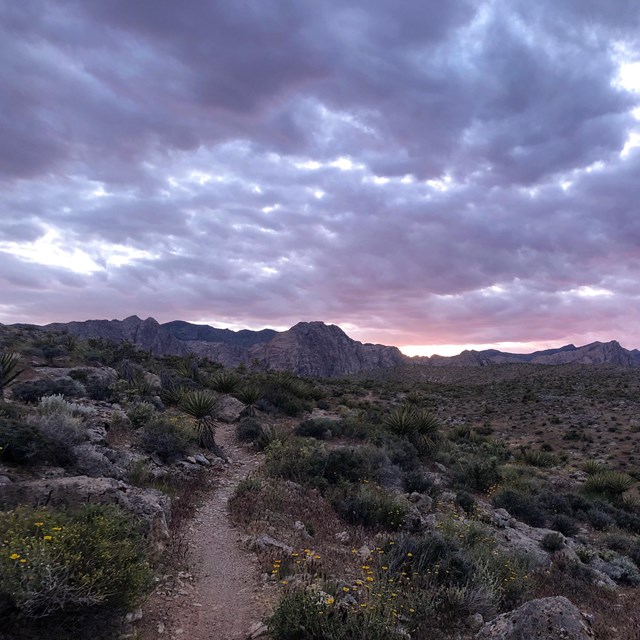Last updated: February 8, 2024
Article
Old Spanish Trail Junior Ranger
Interested in becoming a junior ranger?
Use the information below to complete your worksheet!
Once you are done, follow the steps on how to Become a Junior Ranger to submit your worksheet.
Trail Brochure Information
The Longest, Crookedest, most Arduous Pack Mule Route in the History of America
It is 1829, eight years after Mexico gained independence from Spain. New Mexican traders travel overland to establish new commercial relations with frontier settlements in California. They carry locally produced merchandise to exchange for mules and horses. Items include serapes, blankets, ponchos, and socks; a variety of hides – gamuzas (chamois), buffalo robes, bear and beaver skins; as well as hats, shawls, and quilts. By this time Santa Fe is witnessing increased economic activity brought on by successful American and Mexican trade. Large quantities of manufactured products arrive in New Mexico from the eastern United States along the Santa Fe Trail. Many goods are also traveling along El Camino Real de Tierra Adentro to and from the interior of Mexico.
Packing the Train
Along the Old Spanish Trail sound animals, good packing equipment, and a capable crew were the prerequisites of a successful pack train. The success of the trip depended on the skills and abilities of those who packed and drove the animals that carried the merchandise.
New Mexicans had a well-deserved reputation as excellent horsemen and muleteers. American eyewitnesses marveled at the dexterity and skill with which they harnessed and adjusted packs of merchandise. Experienced travelers suggested that New Mexicans should always be used as teamsters for they “can catch up and roll up in half the time the average person does.”
Packers were always in demand and utilized a variety of skills. They secured loads with intricate knots, splices and hitches; they acted as veterinarians and blacksmiths. They estimated the safe carrying capacity of a mule, and identified and treated animals suffering from improperly balanced loads. They timed the travel day to stop at a meadow or creek bottom that provided good forage. Packers also had to be able to lift heavy loads, be good farriers, and “accomplish marvels with the axe and screw key and a young sapling for a lever.”
Beasts of Burden
Mules had incredible strength and endurance, fared better than horses where water was scarce and forage poor, and recovered more rapidly after periods of hardship. Their hard and small hoofs withstood the shock and abrasion of rocky, boulder-strewn terrain.
The Equipment
While the mule was the heart of the transportation system, the packing equipment played an equally significant role. The aparejo (packsaddle) was the central piece of gear and carried heavy, odd-sized items safely over long distances without injuring the animal. It was described by one observer as “nearer to what I consider perfection in a pack saddle, than any other form of pack saddle yet invented.”
Witness: Illegal Captivity
Long before traders ventured into this region, American Indians traveled and traded along many of the paths that the trade caravans later followed. Petroglyphs show us that the mule caravans were witnessed by American Indians along the route. Indian guides had lengthy contact with Mexican and American traders.
Trade sometimes involved the illegal exchange of horses, mules, and even human beings. Some captives, including American Indians, Spaniards, and Mexicans were ransomed at the frequent trade fairs that characterized the western economy. The slave trade changed the lifeways of American Indians through depopulation and loss of traditional knowledge. Human captivity was part of the reality of the West, affecting all who lived in the region.
Trail Timeline
Learn more about the history of the trail with this historical timeline.


